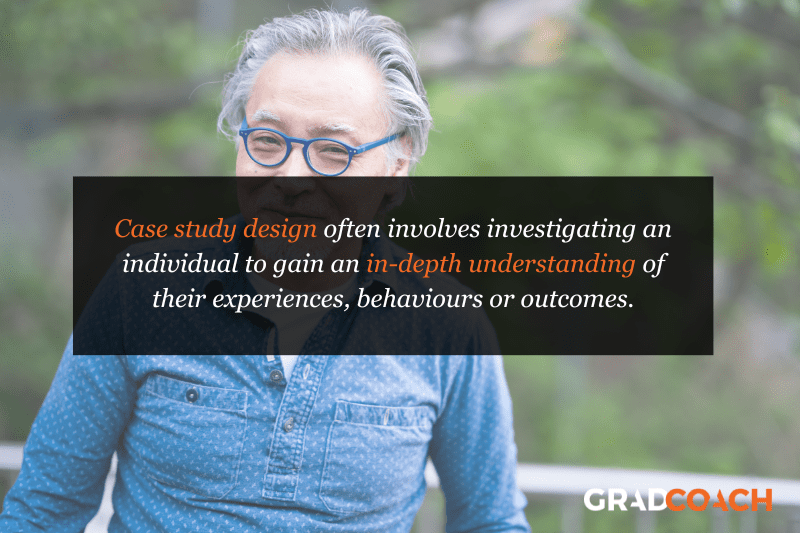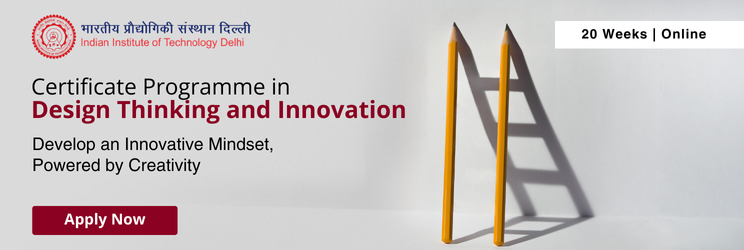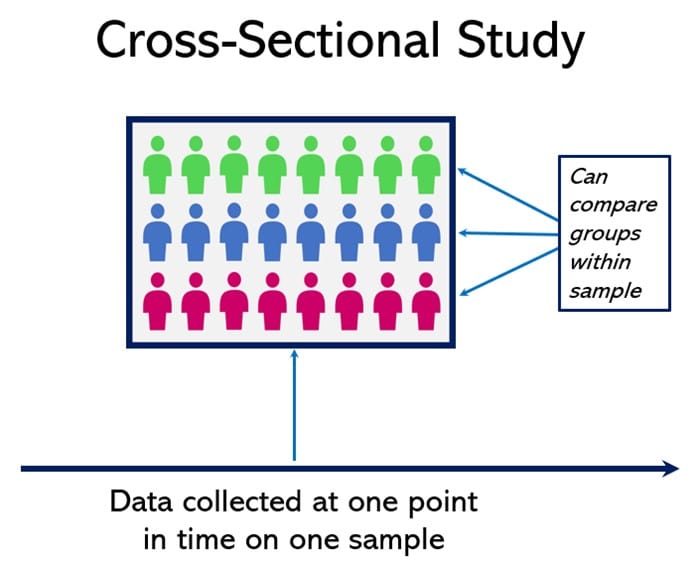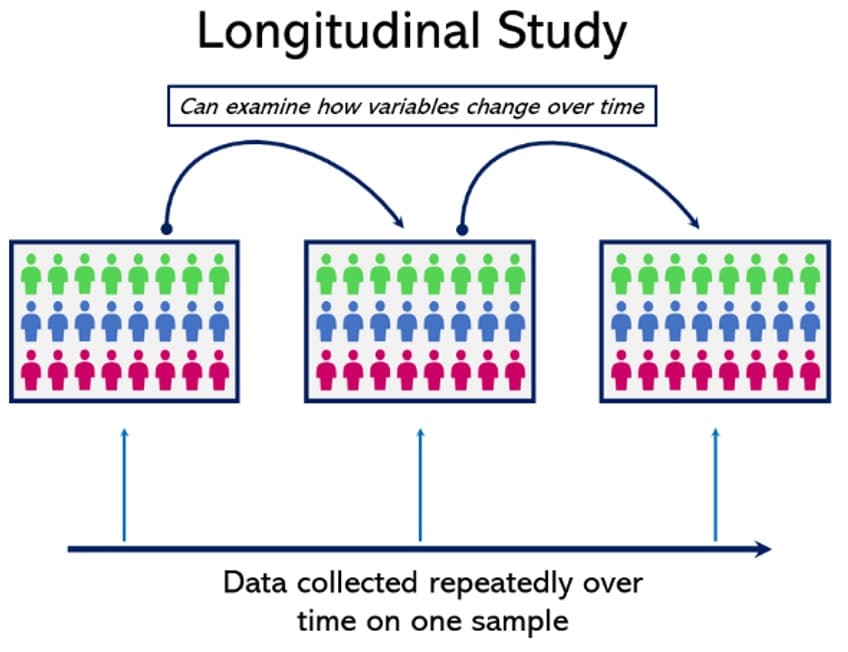- Privacy Policy

Home » Research Design – Types, Methods and Examples

Research Design – Types, Methods and Examples
Table of Contents
Research design is the framework or blueprint that guides the collection, measurement, and analysis of data in a study. It provides a structured approach to answering research questions, ensuring that the study’s goals are met in an organized, reliable, and valid manner. Research design is crucial as it directly impacts the study’s quality, credibility, and findings.

Research Design
Research design is a systematic plan outlining how a study is conducted, including methods of data collection, procedures, and tools for analysis. It aligns the research question with the appropriate methods, ensuring that the study remains focused, feasible, and ethically sound.
Purpose of Research Design :
- Provides a structured approach for data collection and analysis.
- Ensures consistency in the research process.
- Enhances the reliability and validity of findings.
- Minimizes bias by defining clear procedures and controls.
Types of Research Design
Research designs are typically classified into three main types: qualitative , quantitative , and mixed methods . Each type serves different purposes and is selected based on the nature of the research question, objectives, and resources.
1. Qualitative Research Design
- Definition : Qualitative research focuses on exploring complex phenomena, understanding individual experiences, and generating insights into social or human behavior. It often involves non-numerical data, such as interviews, observations, and textual analysis.
- Case Study : In-depth analysis of a specific individual, group, or event.
- Ethnography : Study of cultural groups and practices within their natural setting.
- Grounded Theory : Development of a theory based on observed data.
- Phenomenology : Exploration of lived experiences and perceptions.
- Example : A case study on how remote work impacts employee well-being by conducting interviews with employees from various industries to gather personal insights and themes.
2. Quantitative Research Design
- Definition : Quantitative research is focused on quantifying variables and using statistical analysis to test hypotheses. It often involves large samples, standardized data collection tools, and numerical data.
- Descriptive : Provides a summary of characteristics or behaviors within a population (e.g., surveys, cross-sectional studies).
- Correlational : Examines relationships between two or more variables without manipulating them.
- Experimental : Involves manipulation of variables to establish cause-and-effect relationships.
- Quasi-Experimental : Similar to experimental design but lacks random assignment.
- Example : An experimental study investigating the effect of a new teaching method on student test scores, with one group using the new method and a control group using traditional methods.
3. Mixed-Methods Research Design
- Definition : Mixed-methods design combines both qualitative and quantitative approaches in a single study, providing a more comprehensive analysis of the research question.
- Explanatory Sequential Design : Quantitative data is collected and analyzed first, followed by qualitative data to explain or expand on the quantitative findings.
- Exploratory Sequential Design : Qualitative data is collected first to explore a phenomenon, followed by quantitative data to confirm or generalize findings.
- Convergent Design : Both qualitative and quantitative data are collected simultaneously and compared to produce integrated insights.
- Example : A study on customer satisfaction, first surveying customers to get quantitative data and then conducting follow-up interviews to explore specific customer feedback in detail.
Methods in Research Design
Various methods are used within research designs to collect and analyze data. Each method is selected based on the research question, data type, and study objectives.
1. Survey and Questionnaire
- Definition : Surveys and questionnaires are tools for collecting standardized data from large samples. They are often used in descriptive and correlational studies.
- Develop questions related to the research objectives.
- Distribute to participants via online platforms, paper forms, or face-to-face interviews.
- Analyze results using statistical software for quantitative insights.
- Example : A survey assessing consumer satisfaction with a new product by collecting data on factors such as ease of use, design, and performance.
2. Interview
- Definition : Interviews are qualitative methods that gather in-depth information through direct questioning. They can be structured, semi-structured, or unstructured.
- Design interview questions that align with the research goals.
- Conduct interviews in person, via phone, or virtually, recording responses for analysis.
- Use thematic or content analysis to interpret findings.
- Example : Conducting semi-structured interviews with educators to explore their experiences with online teaching during the COVID-19 pandemic.
3. Observation
- Definition : Observation involves recording behaviors, actions, or events as they occur naturally. It is often used in ethnographic and case study designs.
- Choose between participant (researcher actively engages) or non-participant observation.
- Develop an observation checklist or guide for consistency.
- Record findings, often through field notes or video, and analyze for patterns.
- Example : Observing interactions in a classroom setting to study student engagement with different teaching methods.
4. Experiment
- Definition : Experiments involve manipulating variables to examine cause-and-effect relationships. They are commonly used in scientific and clinical research.
- Randomly assign participants to control and experimental groups.
- Manipulate the independent variable and measure changes in the dependent variable.
- Use statistical analysis to interpret results.
- Example : A laboratory experiment testing the effectiveness of a new drug on blood pressure by comparing outcomes in treated and untreated groups.
5. Case Study
- Definition : A case study is an in-depth investigation of an individual, group, organization, or event to explore underlying principles and patterns.
- Select a case that represents the phenomenon of interest.
- Use various data sources, including interviews, documents, and observations.
- Analyze for unique insights and apply findings to broader contexts.
- Example : A case study on the strategies a small business used to survive during an economic recession.
Examples of Research Design Applications
- Design : Quantitative, using a survey.
- Goal : To understand consumer preferences for eco-friendly packaging.
- Method : Survey distributed to a random sample of consumers asking about purchasing behaviors and attitudes toward sustainability.
- Design : Experimental, quantitative.
- Goal : To study the effect of sleep deprivation on cognitive performance.
- Method : Participants are randomly assigned to sleep-deprived and control groups, with cognitive performance measured using standardized tests.
- Design : Convergent mixed-methods.
- Goal : To evaluate the effectiveness of a new curriculum on student learning.
- Method : Collect quantitative data from student test scores and qualitative data from teacher interviews to provide a comprehensive evaluation.
- Design : Qualitative, ethnography.
- Goal : To study cultural practices in rural communities.
- Method : The researcher spends an extended period within the community, observing daily activities and conducting informal interviews.
Tips for Choosing the Right Research Design
- Align with Research Question : Choose a design that directly addresses the research question and allows for valid answers.
- Consider Data Type : Decide whether the research requires quantitative (numerical) or qualitative (textual or observational) data.
- Assess Feasibility : Take into account time, resources, and access to participants when selecting a design.
- Ensure Ethical Compliance : Make sure the design is ethically sound, with informed consent and confidentiality for participants.
- Anticipate Limitations : Be aware of potential limitations in each design type and how they might affect your findings.
Challenges in Research Design
- Sample Selection Bias : Choosing a non-representative sample can lead to biased results and impact the study’s validity.
- Data Collection Constraints : Limitations in resources or participant access may affect data quality.
- Ethical Concerns : Research involving vulnerable populations or sensitive topics requires careful ethical consideration.
- External Validity : Some designs, like case studies, may have limited generalizability beyond the studied context.
Research design is a critical component of the research process, as it determines how a study is structured, conducted, and analyzed. By choosing the appropriate design—whether qualitative, quantitative, or mixed methods—researchers ensure that they answer their questions effectively, producing credible, reliable, and valid results. A solid research design aligns with the study’s objectives, considers resources and ethical issues, and anticipates limitations to provide meaningful contributions to knowledge.
- Creswell, J. W., & Creswell, J. D. (2018). Research Design: Qualitative, Quantitative, and Mixed Methods Approaches . SAGE Publications.
- Trochim, W. M., & Donnelly, J. P. (2008). The Research Methods Knowledge Base . Cengage Learning.
- Saunders, M., Lewis, P., & Thornhill, A. (2019). Research Methods for Business Students . Pearson Education.
- Yin, R. K. (2017). Case Study Research and Applications: Design and Methods . SAGE Publications.
About the author
Muhammad Hassan
Researcher, Academic Writer, Web developer
You may also like

References in Research – Types, Examples and...

Research Methods – Types, Examples and Guide

Research Methodology – Types, Examples and...

Research Recommendations – Examples and Writing...

Research Paper Title – Writing Guide and Example

Delimitations in Research – Types, Examples and...

🚀 Work With Us
Private Coaching
Language Editing
Qualitative Coding
✨ Free Resources
Templates & Tools
Short Courses
Articles & Videos
What Is Research Design?
A Plain-Language Explainer (With Examples)
By: Derek Jansen (MBA) | Reviewers: Eunice Rautenbach (DTech) & Kerryn Warren (PhD) | April 2023

Overview: Research Design 101
What is research design.
- Research design types for quantitative studies
- Video explainer : quantitative research design
- Research design types for qualitative studies
- Video explainer : qualitative research design
- How to choose a research design
- Key takeaways
Research design refers to the overall plan, structure or strategy that guides a research project , from its conception to the final data analysis. A good research design serves as the blueprint for how you, as the researcher, will collect and analyse data while ensuring consistency, reliability and validity throughout your study.
Understanding different types of research designs is essential as helps ensure that your approach is suitable given your research aims, objectives and questions , as well as the resources you have available to you. Without a clear big-picture view of how you’ll design your research, you run the risk of potentially making misaligned choices in terms of your methodology – especially your sampling , data collection and data analysis decisions.
The problem with defining research design…
One of the reasons students struggle with a clear definition of research design is because the term is used very loosely across the internet, and even within academia.
Some sources claim that the three research design types are qualitative, quantitative and mixed methods , which isn’t quite accurate (these just refer to the type of data that you’ll collect and analyse). Other sources state that research design refers to the sum of all your design choices, suggesting it’s more like a research methodology . Others run off on other less common tangents. No wonder there’s confusion!
In this article, we’ll clear up the confusion. We’ll explain the most common research design types for both qualitative and quantitative research projects, whether that is for a full dissertation or thesis, or a smaller research paper or article.

Research Design: Quantitative Studies
Quantitative research involves collecting and analysing data in a numerical form. Broadly speaking, there are four types of quantitative research designs: descriptive , correlational , experimental , and quasi-experimental .
As the name suggests, descriptive research design focuses on describing existing conditions, behaviours, or characteristics by systematically gathering information without manipulating any variables. In other words, there is no intervention on the researcher’s part – only data collection.
For example, if you’re studying smartphone addiction among adolescents in your community, you could deploy a survey to a sample of teens asking them to rate their agreement with certain statements that relate to smartphone addiction. The collected data would then provide insight regarding how widespread the issue may be – in other words, it would describe the situation.
The key defining attribute of this type of research design is that it purely describes the situation . In other words, descriptive research design does not explore potential relationships between different variables or the causes that may underlie those relationships. Therefore, descriptive research is useful for generating insight into a research problem by describing its characteristics . By doing so, it can provide valuable insights and is often used as a precursor to other research design types.
Correlational Research Design
Correlational design is a popular choice for researchers aiming to identify and measure the relationship between two or more variables without manipulating them . In other words, this type of research design is useful when you want to know whether a change in one thing tends to be accompanied by a change in another thing.
For example, if you wanted to explore the relationship between exercise frequency and overall health, you could use a correlational design to help you achieve this. In this case, you might gather data on participants’ exercise habits, as well as records of their health indicators like blood pressure, heart rate, or body mass index. Thereafter, you’d use a statistical test to assess whether there’s a relationship between the two variables (exercise frequency and health).
As you can see, correlational research design is useful when you want to explore potential relationships between variables that cannot be manipulated or controlled for ethical, practical, or logistical reasons. It is particularly helpful in terms of developing predictions , and given that it doesn’t involve the manipulation of variables, it can be implemented at a large scale more easily than experimental designs (which will look at next).
⚡ GET THE FREE TEMPLATE ⚡
Fast-track your research with our award-winning Methodology Template .
Download Now 📂
Experimental research design is used to determine if there is a causal relationship between two or more variables . With this type of research design, you, as the researcher, manipulate one variable (the independent variable) while controlling others (dependent variables). Doing so allows you to observe the effect of the former on the latter and draw conclusions about potential causality.
For example, if you wanted to measure if/how different types of fertiliser affect plant growth, you could set up several groups of plants, with each group receiving a different type of fertiliser, as well as one with no fertiliser at all. You could then measure how much each plant group grew (on average) over time and compare the results from the different groups to see which fertiliser was most effective.
Overall, experimental research design provides researchers with a powerful way to identify and measure causal relationships (and the direction of causality) between variables. However, developing a rigorous experimental design can be challenging as it’s not always easy to control all the variables in a study. This often results in smaller sample sizes , which can reduce the statistical power and generalisability of the results.
Moreover, experimental research design requires random assignment . This means that the researcher needs to assign participants to different groups or conditions in a way that each participant has an equal chance of being assigned to any group (note that this is not the same as random sampling ). Doing so helps reduce the potential for bias and confounding variables . This need for random assignment can lead to ethics-related issues . For example, withholding a potentially beneficial medical treatment from a control group may be considered unethical in certain situations.
Quasi-Experimental Research Design
Quasi-experimental research design is used when the research aims involve identifying causal relations , but one cannot (or doesn’t want to) randomly assign participants to different groups (for practical or ethical reasons). Instead, with a quasi-experimental research design, the researcher relies on existing groups or pre-existing conditions to form groups for comparison.
For example, if you were studying the effects of a new teaching method on student achievement in a particular school district, you may be unable to randomly assign students to either group and instead have to choose classes or schools that already use different teaching methods. This way, you still achieve separate groups, without having to assign participants to specific groups yourself.
Naturally, quasi-experimental research designs have limitations when compared to experimental designs. Given that participant assignment is not random, it’s more difficult to confidently establish causality between variables, and, as a researcher, you have less control over other variables that may impact findings.

Research Design: Qualitative Studies
There are many different research design types when it comes to qualitative studies, but here we’ll narrow our focus to explore the “Big 4”. Specifically, we’ll look at phenomenological design, grounded theory design, ethnographic design, and case study design.
Phenomenological design involves exploring the meaning of lived experiences and how they are perceived by individuals. This type of research design seeks to understand people’s perspectives , emotions, and behaviours in specific situations. Here, the aim for researchers is to uncover the essence of human experience without making any assumptions or imposing preconceived ideas on their subjects.
For example, you could adopt a phenomenological design to study why cancer survivors have such varied perceptions of their lives after overcoming their disease. This could be achieved by interviewing survivors and then analysing the data using a qualitative analysis method such as thematic analysis to identify commonalities and differences.
Phenomenological research design typically involves in-depth interviews or open-ended questionnaires to collect rich, detailed data about participants’ subjective experiences. This richness is one of the key strengths of phenomenological research design but, naturally, it also has limitations. These include potential biases in data collection and interpretation and the lack of generalisability of findings to broader populations.
Grounded Theory Research Design
Grounded theory (also referred to as “GT”) aims to develop theories by continuously and iteratively analysing and comparing data collected from a relatively large number of participants in a study. It takes an inductive (bottom-up) approach, with a focus on letting the data “speak for itself”, without being influenced by preexisting theories or the researcher’s preconceptions.
As an example, let’s assume your research aims involved understanding how people cope with chronic pain from a specific medical condition, with a view to developing a theory around this. In this case, grounded theory design would allow you to explore this concept thoroughly without preconceptions about what coping mechanisms might exist. You may find that some patients prefer cognitive-behavioural therapy (CBT) while others prefer to rely on herbal remedies. Based on multiple, iterative rounds of analysis, you could then develop a theory in this regard, derived directly from the data (as opposed to other preexisting theories and models).
Grounded theory typically involves collecting data through interviews or observations and then analysing it to identify patterns and themes that emerge from the data. These emerging ideas are then validated by collecting more data until a saturation point is reached (i.e., no new information can be squeezed from the data). From that base, a theory can then be developed .

Ethnographic design involves observing and studying a culture-sharing group of people in their natural setting to gain insight into their behaviours, beliefs, and values. The focus here is on observing participants in their natural environment (as opposed to a controlled environment). This typically involves the researcher spending an extended period of time with the participants in their environment, carefully observing and taking field notes .
All of this is not to say that ethnographic research design relies purely on observation. On the contrary, this design typically also involves in-depth interviews to explore participants’ views, beliefs, etc. However, unobtrusive observation is a core component of the ethnographic approach.
As an example, an ethnographer may study how different communities celebrate traditional festivals or how individuals from different generations interact with technology differently. This may involve a lengthy period of observation, combined with in-depth interviews to further explore specific areas of interest that emerge as a result of the observations that the researcher has made.
As you can probably imagine, ethnographic research design has the ability to provide rich, contextually embedded insights into the socio-cultural dynamics of human behaviour within a natural, uncontrived setting. Naturally, however, it does come with its own set of challenges, including researcher bias (since the researcher can become quite immersed in the group), participant confidentiality and, predictably, ethical complexities . All of these need to be carefully managed if you choose to adopt this type of research design.
Case Study Design
With case study research design, you, as the researcher, investigate a single individual (or a single group of individuals) to gain an in-depth understanding of their experiences, behaviours or outcomes. Unlike other research designs that are aimed at larger sample sizes, case studies offer a deep dive into the specific circumstances surrounding a person, group of people, event or phenomenon, generally within a bounded setting or context .
As an example, a case study design could be used to explore the factors influencing the success of a specific small business. This would involve diving deeply into the organisation to explore and understand what makes it tick – from marketing to HR to finance. In terms of data collection, this could include interviews with staff and management, review of policy documents and financial statements, surveying customers, etc.
While the above example is focused squarely on one organisation, it’s worth noting that case study research designs can have different variation s, including single-case, multiple-case and longitudinal designs. As you can see in the example, a single-case design involves intensely examining a single entity to understand its unique characteristics and complexities. Conversely, in a multiple-case design , multiple cases are compared and contrasted to identify patterns and commonalities. Lastly, in a longitudinal case design , a single case or multiple cases are studied over an extended period of time to understand how factors develop over time.

How To Choose A Research Design
Having worked through all of these potential research designs, you’d be forgiven for feeling a little overwhelmed and wondering, “ But how do I decide which research design to use? ”. While we could write an entire post covering that alone, here are a few factors to consider that will help you choose a suitable research design for your study.
Data type: The first determining factor is naturally the type of data you plan to be collecting – i.e., qualitative or quantitative. This may sound obvious, but we have to be clear about this – don’t try to use a quantitative research design on qualitative data (or vice versa)!
Research aim(s) and question(s): As with all methodological decisions, your research aim and research questions will heavily influence your research design. For example, if your research aims involve developing a theory from qualitative data, grounded theory would be a strong option. Similarly, if your research aims involve identifying and measuring relationships between variables, one of the experimental designs would likely be a better option.
Time: It’s essential that you consider any time constraints you have, as this will impact the type of research design you can choose. For example, if you’ve only got a month to complete your project, a lengthy design such as ethnography wouldn’t be a good fit.
Resources: Take into account the resources realistically available to you, as these need to factor into your research design choice. For example, if you require highly specialised lab equipment to execute an experimental design, you need to be sure that you’ll have access to that before you make a decision.
Keep in mind that when it comes to research, it’s important to manage your risks and play as conservatively as possible. If your entire project relies on you achieving a huge sample, having access to niche equipment or holding interviews with very difficult-to-reach participants, you’re creating risks that could kill your project. So, be sure to think through your choices carefully and make sure that you have backup plans for any existential risks. Remember that a relatively simple methodology executed well generally will typically earn better marks than a highly-complex methodology executed poorly.

Recap: Key Takeaways
We’ve covered a lot of ground here. Let’s recap by looking at the key takeaways:
- Research design refers to the overall plan, structure or strategy that guides a research project, from its conception to the final analysis of data.
- Research designs for quantitative studies include descriptive , correlational , experimental and quasi-experimenta l designs.
- Research designs for qualitative studies include phenomenological , grounded theory , ethnographic and case study designs.
- When choosing a research design, you need to consider a variety of factors, including the type of data you’ll be working with, your research aims and questions, your time and the resources available to you.
If you need a helping hand with your research design (or any other aspect of your research), check out our private coaching services .

Become A Methodology Wiz ✨

How To Choose A Tutor For Your Dissertation
Hiring the right tutor for your dissertation or thesis can make the difference between passing and failing. Here’s what you need to consider.

5 Signs You Need A Dissertation Helper
Discover the 5 signs that suggest you need a dissertation helper to get unstuck, finish your degree and get your life back.

Triangulation: The Ultimate Credibility Enhancer
Triangulation is one of the best ways to enhance the credibility of your research. Learn about the different options here.

Research Limitations 101: What You Need To Know
Learn everything you need to know about research limitations (AKA limitations of the study). Includes practical examples from real studies.

In Vivo Coding 101: Full Explainer With Examples
Learn about in vivo coding, a popular qualitative coding technique ideal for studies where the nuances of language are central to the aims.
📄 FREE TEMPLATES
Research Topic Ideation
Proposal Writing
Literature Review
Methodology & Analysis
Academic Writing
Referencing & Citing
Apps, Tools & Tricks
The Grad Coach Podcast
20 Comments
Is there any blog article explaining more on Case study research design? Is there a Case study write-up template? Thank you.
Thanks this was quite valuable to clarify such an important concept.
Thanks for this simplified explanations. it is quite very helpful.
This was really helpful. thanks
Thank you for your explanation. I think case study research design and the use of secondary data in researches needs to be talked about more in your videos and articles because there a lot of case studies research design tailored projects out there.
Please is there any template for a case study research design whose data type is a secondary data on your repository?
This post is very clear, comprehensive and has been very helpful to me. It has cleared the confusion I had in regard to research design and methodology.
I appreciate the information get from you.
This post is helpful, easy to understand, and deconstructs what a research design is. Thanks
This post is really helpful.
how to cite this page
Thank you very much for the post. It is wonderful and has cleared many worries in my mind regarding research designs. I really appreciate .
how can I put this blog as my reference(APA style) in bibliography part?
This post has been very useful to me. Confusing areas have been cleared
This is very helpful and very useful!
Wow! This post has an awful explanation. Appreciated.
Thanks This has been helpful
Micah on 29, September, 2024 this is really helpful
This article is on point. Very well articulated and simply to understand. thanks for pointing out the term has been used very loosely across the internet, and even within academia. This is why so many students find it difficult to explain their study design
Thank you for these useful materials on how to designs the research
After some time on the internet trying to understand what a research design is, this page finally settled the case. Very elaborate and clear explanation, thanks!
Submit a Comment Cancel reply
Your email address will not be published. Required fields are marked *
Save my name, email, and website in this browser for the next time I comment.
Submit Comment
- Print Friendly

Indian School of Business
- Kellogg Executive Education Northwestern University’s business school, Kellogg, has been consistently recognized as one of the best business schools in the world leading publications. More than 35 years ago, Kellogg pioneered Executive Education providing an immersive living and learning atmosphere where participants learn from world-renowned faculty and practitioners for a fully transformative academic experience.
- MIT xPRO Technology is accelerating at an unprecedented pace causing disruption across all levels of business. Tomorrow’s leaders must demonstrate technical expertise as well as leadership acumen in order to maintain a technical edge over the competition. MIT uniquely understands this challenge and to solve it with decades of experience developing technical professionals, it has launched MIT xPRO.
- IIM Calcutta
IIM Kozhikode
Iim lucknow.
- IIM Indore The Indian Institute of Management Indore (IIM Indore) is one of the fastest-growing institutions in India today, consistently ranked among the top 10 B-schools in India. Committed to excellence in management education, research & training, and using contemporary participant-centric pedagogies & teaching methods, IIM Indore’s world-class academic standards develop socially-conscious managers, leaders and entrepreneurs.
- XLRI Situated in Jamshedpur, Xavier School of Management (XLRI) is accredited by AMBA and AACSB. XLRI has 25 international partners for its student exchange programmes across top countries, such as the US, Australia, Germany, Belgium, Sweden, UK, Spain, Poland, among others.
- IIT Bombay Indian Institute of Technology Bombay is a public technical university located in Powai in Mumbai, Maharashtra, India. IIT Bombay was founded in 1958. In 1961, the Parliament decreed IITs as Institutes of National Importance
- S.P. Jain Institute of Management and Research S. P. Jain Institute of Management and Research, known as SPJIMR, is a private non-profit post-graduate management school based in Mumbai, India. Founded in 1981 under the aegis of Bharatiya Vidya Bhavan, The Institute offers several full-time and part-time management programmes.
- IITM Pravartak IIT Madras Pravartak Technologies Foundation is a section 08 Company housing the Technology Innovation Hub on Sensors, Networking, Actuators, and Control Systems (SNACS), committed to transforming the frontiers of knowledge. Their start-up ecosystem is the nurturing space of brilliant professionals, Innovative entrepreneurs, curious young talents, and inquisitive students. With world-class infrastructure, equipment, and experienced mentors, they have everything to offer for the technology-hungry brains.
- View All Institutions
- Browse by Categories
Product Management
Professional certificate in product management.
- ISB Product Management
Post Graduate Certificate in Product Management
- Design Thinking
- Digital Marketing and Analytics
- Digital Marketing: Applications and Analytics
- Professional Certificate Programme on Digital Marketing
- Digital Transformation
- Post Graduate Certificate in Digital Marketing
- Executive Programme in Data Science
- Applied Business Analytics
- Senior Management Programme in Business Analytics
- Data Science
- Business Analytics
- Data Analytics
- AI & ML
- Senior Management Programme
- Chief Financial Officer Programme
- Healthcare Management
- Chief Digital Officer Programme
- Senior Leadership Programme
- Executive Programme in Healthcare Management
- Human Resource Management
- Executive Programme in Business Strategy
- Certificate Programme in Healthcare Leadership
- Advanced Strategic Management Programme
- MIT xPRO Post Graduate Certificate in Technology Leadership & Innovation
- Business Management Courses
- Human Resource Management Courses
- Advanced Programme in Strategic Project Management
- Advanced Operations Management & Analytics
- IT Project Management
- Advanced Programme in Supply Chain Management
- Executive Programme in Project Management
- Post Graduate Certificate in Project Management
- Operations Management
- Supply Chain Management
- Executive Programme in Strategic Marketing for Business Success
- Strategic Brand Management and Communications
- Financial Analysis and Financial Management
- Venture Capital and Private Equity Programme
- Certificate Programme in IT Project Management
- Post Graduate Certificate in Cybersecurity
- Post Graduate Certificate in Full Stack Development
- Browse by Course Type
- Certificate Courses
- CXO Courses
- Global Programs
Home / Blog / Product Management / 5 Types of Research Design – Elements, Needs and Characteristics
5 Types of Research Design – Elements, Needs and Characteristics
Share the article

What is a Research Design?
What are the characteristics of research design, what are the main elements of a research design, what is the need for research design, important concepts of research design, what are the different types of research design.
Before conducting any research, you must devise a plan to collect and evaluate data, tackle the challenges and reach a conclusion.
A detailed plan will give your research direction, sharpen your research methods and set your study up for success. This detailed plan is referred to as research design in the professional realm.

Research design is a blueprint of a scientific study. It includes research methodologies , tools, and techniques to conduct the research. It helps to identify and address the problem that may rise during the process of research and analysis.
In this article, we will look at different types of research designs.
You’ll also learn the following:
- What is research design?
- Main elements of research design
- Characteristics of research design
A researcher usually chooses the research methodologies and techniques at the start of the research. The document that contains information about the technique, methods and essential details of a project is called a research design.
Experts define research design as the glue that holds the research project together.
It (research design) helps provide a structure and direction to the research, yielding favourable results.
Here are some principles of a sound research design:
- Identifies the problems
- Reviews literature around the problem statement
- Specifies hypothesis
- Describes sources of data
- Defines how data will be interpreted
Best Product Management Courses

Intermediate
ISB Executive Network

Kellogg Northwestern University
Certificate of completion

Professional Certificate Programme in Product Management
Last Date to Apply: January 3, 2025
There are many ways to measure the results of research. A good research design helps select the right measuring tools to gauge results according to the research objective.
Generalised
A good research design draws an outcome that can be applied to a large set of people and is not limited to sample size or the research group.
At the start of every research, a researcher needs to make some assumptions that will be tested during the research. A proper research design ensures that the assumptions are free of bias and neutral. It also provides that the data collected throughout the research is based on the assumptions made at the beginning of the research.
Reliability
Research design, when done right, can generate similar results every time it is performed. However, yielding similar results is only possible if your research design is reliable.
Here are some of the elements of a good research design:
- Purpose statement
- Data collection methods
- Techniques of data analysis
- Types of research methodologies
- Challenges of the research
- Prerequisites required for study
- Duration of the research study
- Measurement of analysis
- Reduces inaccuracy
- Increases efficiency and reliability
- Eliminates bias and errors
- Minimises wastage of time
- Helpful in testing the hypothesis
- Provides a direction to the research
Variable is a concept that can take on various quantitative values. For instance, weight, height, etc.
Dependent Variable
A dependent variable is a variable that is tested in an experiment. It is dependent, in some way on the variation of an independent variable.
Independent Variable
An independent variable in an experiment is considered to stand on its own. For instance, if the test scores of a class are an outcome of their efforts; efforts are an independent variable, and the score is a dependent variable.
It is defined as the hypothesis that needs to be tested in an experiment.
A researcher must be well-versed in different types of research design. Moreover, a clear understanding of different research designs helps choose the proper technique for the research.
Research design is broadly divided into quantitative and qualitative research design. We’ll walk you through them in detail below.
Quantitative research design
Quantitative research design aims at finding answers to who, what, where, how, and when through the course of research. Moreover, the outcome of the quantitative analysis is easy to represent in the form of statistics, graphs, charts, and numbers.
Qualitative research design
Qualitative research design focuses on finding answers to how and why. It uses open-ended questions and helps the subjects express their views clearly. Qualitative research is ideal for businesses that aim to understand customers’ behaviour and requirements. You can further break the types of research designs into five categories.
Experimental design
This type of research design looks at a problem scientifically by establishing a clear cause and effect of every event. It also tries to understand the impact of the independent variable on the dependable variable. Often social sciences use it to observe human behaviours and understand the social psychology of human being better.
Correlational design
Correlation research design establishes a relationship between two related variables. The researcher observes the variables over time and then draws conclusions based on them. This type of research design requires two different groups. A correlation coefficient determines the relationship between two variables. The value of the correlation coefficient ranges between -1 and +1. If the correlation coefficient is +1, it indicates a positive relationship between the two variables, and -1 means a negative relationship.
Descriptive design
Descriptive design is a theory-based research method describing the research’s primary subject matter. This type of research design uses data collection techniques like natural observation, case studies, and surveys to derive results. This type of research design provides insight into the why and how of research.
Diagnostic design
In diagnostic research, the design strives to explore the reason behind an issue and find solutions to solve it. This type of research design tries to solve the problems in a structured form divided into three phases- the issue’s inception, diagnosis of the issue, and solution for the issue.
Explanatory design
In this research design, the researcher explores concepts and ideas on a subject to explore more theories. The main aim of the research is to explore the subjects’ undiscovered aspects and answer questions like what, how, and why.
Planning to make a career in research and development? Pursue advanced courses in Design Thinking and research from Emeritus India.
We offer certificate courses in partnership with association with prestigious institutes like IIT, IIM, and ISB. Joining our online courses will equip you with the advanced skills and knowledge required to make a successful career in the field.

About the Author
Yashvi jain, accelerate your career with the right programme.
Share your details and let our experts guide you
Learn more about building skills for the future. Sign up for our latest newsletter
Get insights from expert blogs, bite-sized videos, course updates & more with the Emeritus Newsletter.
Courses on Product Management Category

ISB Executive Alumni Status

Chief Product Officer Programme
IIM Kozhikode Executive Alumni Status
Last Date to Apply: January 15, 2025

Professional Certificate in Instructional Design
Digital certificate of completion

Executive Programme in Data Driven Product Management
Live Online
Executive Alumni Status

Who is a Technical Product Manager? A Complete Guide

How Does a CPO Manage a Product Portfolio?

Emeritus is committed to teaching the skills of the future by making high-quality education accessible and affordable to individuals, companies, and governments around the world. It does this by collaborating with more than 80 top-tier universities across the United States, Europe, Latin America, Southeast Asia, India and China. Emeritus’ short courses, degree programs, professional certificates, and senior executive programs help individuals learn new skills and transform their lives, companies and organizations.
© 2024. All Rights Reserved
Download brochure for

Duration: 24 Weeks
Modality: Online
Level: Intermediate
Have a language expert improve your writing
Run a free plagiarism check in 10 minutes, automatically generate references for free.
- Knowledge Base
- Methodology
Research Design | Step-by-Step Guide with Examples
Published on 5 May 2022 by Shona McCombes . Revised on 20 March 2023.
A research design is a strategy for answering your research question using empirical data. Creating a research design means making decisions about:
- Your overall aims and approach
- The type of research design you’ll use
- Your sampling methods or criteria for selecting subjects
- Your data collection methods
- The procedures you’ll follow to collect data
- Your data analysis methods
A well-planned research design helps ensure that your methods match your research aims and that you use the right kind of analysis for your data.
Table of contents
Step 1: consider your aims and approach, step 2: choose a type of research design, step 3: identify your population and sampling method, step 4: choose your data collection methods, step 5: plan your data collection procedures, step 6: decide on your data analysis strategies, frequently asked questions.
- Introduction
Before you can start designing your research, you should already have a clear idea of the research question you want to investigate.
There are many different ways you could go about answering this question. Your research design choices should be driven by your aims and priorities – start by thinking carefully about what you want to achieve.
The first choice you need to make is whether you’ll take a qualitative or quantitative approach.
Qualitative research designs tend to be more flexible and inductive , allowing you to adjust your approach based on what you find throughout the research process.
Quantitative research designs tend to be more fixed and deductive , with variables and hypotheses clearly defined in advance of data collection.
It’s also possible to use a mixed methods design that integrates aspects of both approaches. By combining qualitative and quantitative insights, you can gain a more complete picture of the problem you’re studying and strengthen the credibility of your conclusions.
Practical and ethical considerations when designing research
As well as scientific considerations, you need to think practically when designing your research. If your research involves people or animals, you also need to consider research ethics .
- How much time do you have to collect data and write up the research?
- Will you be able to gain access to the data you need (e.g., by travelling to a specific location or contacting specific people)?
- Do you have the necessary research skills (e.g., statistical analysis or interview techniques)?
- Will you need ethical approval ?
At each stage of the research design process, make sure that your choices are practically feasible.
Prevent plagiarism, run a free check.
Within both qualitative and quantitative approaches, there are several types of research design to choose from. Each type provides a framework for the overall shape of your research.
Types of quantitative research designs
Quantitative designs can be split into four main types. Experimental and quasi-experimental designs allow you to test cause-and-effect relationships, while descriptive and correlational designs allow you to measure variables and describe relationships between them.
With descriptive and correlational designs, you can get a clear picture of characteristics, trends, and relationships as they exist in the real world. However, you can’t draw conclusions about cause and effect (because correlation doesn’t imply causation ).
Experiments are the strongest way to test cause-and-effect relationships without the risk of other variables influencing the results. However, their controlled conditions may not always reflect how things work in the real world. They’re often also more difficult and expensive to implement.
Types of qualitative research designs
Qualitative designs are less strictly defined. This approach is about gaining a rich, detailed understanding of a specific context or phenomenon, and you can often be more creative and flexible in designing your research.
The table below shows some common types of qualitative design. They often have similar approaches in terms of data collection, but focus on different aspects when analysing the data.
Your research design should clearly define who or what your research will focus on, and how you’ll go about choosing your participants or subjects.
In research, a population is the entire group that you want to draw conclusions about, while a sample is the smaller group of individuals you’ll actually collect data from.
Defining the population
A population can be made up of anything you want to study – plants, animals, organisations, texts, countries, etc. In the social sciences, it most often refers to a group of people.
For example, will you focus on people from a specific demographic, region, or background? Are you interested in people with a certain job or medical condition, or users of a particular product?
The more precisely you define your population, the easier it will be to gather a representative sample.
Sampling methods
Even with a narrowly defined population, it’s rarely possible to collect data from every individual. Instead, you’ll collect data from a sample.
To select a sample, there are two main approaches: probability sampling and non-probability sampling . The sampling method you use affects how confidently you can generalise your results to the population as a whole.
Probability sampling is the most statistically valid option, but it’s often difficult to achieve unless you’re dealing with a very small and accessible population.
For practical reasons, many studies use non-probability sampling, but it’s important to be aware of the limitations and carefully consider potential biases. You should always make an effort to gather a sample that’s as representative as possible of the population.
Case selection in qualitative research
In some types of qualitative designs, sampling may not be relevant.
For example, in an ethnography or a case study, your aim is to deeply understand a specific context, not to generalise to a population. Instead of sampling, you may simply aim to collect as much data as possible about the context you are studying.
In these types of design, you still have to carefully consider your choice of case or community. You should have a clear rationale for why this particular case is suitable for answering your research question.
For example, you might choose a case study that reveals an unusual or neglected aspect of your research problem, or you might choose several very similar or very different cases in order to compare them.
Data collection methods are ways of directly measuring variables and gathering information. They allow you to gain first-hand knowledge and original insights into your research problem.
You can choose just one data collection method, or use several methods in the same study.
Survey methods
Surveys allow you to collect data about opinions, behaviours, experiences, and characteristics by asking people directly. There are two main survey methods to choose from: questionnaires and interviews.
Observation methods
Observations allow you to collect data unobtrusively, observing characteristics, behaviours, or social interactions without relying on self-reporting.
Observations may be conducted in real time, taking notes as you observe, or you might make audiovisual recordings for later analysis. They can be qualitative or quantitative.

Other methods of data collection
There are many other ways you might collect data depending on your field and topic.
If you’re not sure which methods will work best for your research design, try reading some papers in your field to see what data collection methods they used.
Secondary data
If you don’t have the time or resources to collect data from the population you’re interested in, you can also choose to use secondary data that other researchers already collected – for example, datasets from government surveys or previous studies on your topic.
With this raw data, you can do your own analysis to answer new research questions that weren’t addressed by the original study.
Using secondary data can expand the scope of your research, as you may be able to access much larger and more varied samples than you could collect yourself.
However, it also means you don’t have any control over which variables to measure or how to measure them, so the conclusions you can draw may be limited.
As well as deciding on your methods, you need to plan exactly how you’ll use these methods to collect data that’s consistent, accurate, and unbiased.
Planning systematic procedures is especially important in quantitative research, where you need to precisely define your variables and ensure your measurements are reliable and valid.
Operationalisation
Some variables, like height or age, are easily measured. But often you’ll be dealing with more abstract concepts, like satisfaction, anxiety, or competence. Operationalisation means turning these fuzzy ideas into measurable indicators.
If you’re using observations , which events or actions will you count?
If you’re using surveys , which questions will you ask and what range of responses will be offered?
You may also choose to use or adapt existing materials designed to measure the concept you’re interested in – for example, questionnaires or inventories whose reliability and validity has already been established.
Reliability and validity
Reliability means your results can be consistently reproduced , while validity means that you’re actually measuring the concept you’re interested in.
For valid and reliable results, your measurement materials should be thoroughly researched and carefully designed. Plan your procedures to make sure you carry out the same steps in the same way for each participant.
If you’re developing a new questionnaire or other instrument to measure a specific concept, running a pilot study allows you to check its validity and reliability in advance.
Sampling procedures
As well as choosing an appropriate sampling method, you need a concrete plan for how you’ll actually contact and recruit your selected sample.
That means making decisions about things like:
- How many participants do you need for an adequate sample size?
- What inclusion and exclusion criteria will you use to identify eligible participants?
- How will you contact your sample – by mail, online, by phone, or in person?
If you’re using a probability sampling method, it’s important that everyone who is randomly selected actually participates in the study. How will you ensure a high response rate?
If you’re using a non-probability method, how will you avoid bias and ensure a representative sample?
Data management
It’s also important to create a data management plan for organising and storing your data.
Will you need to transcribe interviews or perform data entry for observations? You should anonymise and safeguard any sensitive data, and make sure it’s backed up regularly.
Keeping your data well organised will save time when it comes to analysing them. It can also help other researchers validate and add to your findings.
On their own, raw data can’t answer your research question. The last step of designing your research is planning how you’ll analyse the data.
Quantitative data analysis
In quantitative research, you’ll most likely use some form of statistical analysis . With statistics, you can summarise your sample data, make estimates, and test hypotheses.
Using descriptive statistics , you can summarise your sample data in terms of:
- The distribution of the data (e.g., the frequency of each score on a test)
- The central tendency of the data (e.g., the mean to describe the average score)
- The variability of the data (e.g., the standard deviation to describe how spread out the scores are)
The specific calculations you can do depend on the level of measurement of your variables.
Using inferential statistics , you can:
- Make estimates about the population based on your sample data.
- Test hypotheses about a relationship between variables.
Regression and correlation tests look for associations between two or more variables, while comparison tests (such as t tests and ANOVAs ) look for differences in the outcomes of different groups.
Your choice of statistical test depends on various aspects of your research design, including the types of variables you’re dealing with and the distribution of your data.
Qualitative data analysis
In qualitative research, your data will usually be very dense with information and ideas. Instead of summing it up in numbers, you’ll need to comb through the data in detail, interpret its meanings, identify patterns, and extract the parts that are most relevant to your research question.
Two of the most common approaches to doing this are thematic analysis and discourse analysis .
There are many other ways of analysing qualitative data depending on the aims of your research. To get a sense of potential approaches, try reading some qualitative research papers in your field.
A sample is a subset of individuals from a larger population. Sampling means selecting the group that you will actually collect data from in your research.
For example, if you are researching the opinions of students in your university, you could survey a sample of 100 students.
Statistical sampling allows you to test a hypothesis about the characteristics of a population. There are various sampling methods you can use to ensure that your sample is representative of the population as a whole.
Operationalisation means turning abstract conceptual ideas into measurable observations.
For example, the concept of social anxiety isn’t directly observable, but it can be operationally defined in terms of self-rating scores, behavioural avoidance of crowded places, or physical anxiety symptoms in social situations.
Before collecting data , it’s important to consider how you will operationalise the variables that you want to measure.
The research methods you use depend on the type of data you need to answer your research question .
- If you want to measure something or test a hypothesis , use quantitative methods . If you want to explore ideas, thoughts, and meanings, use qualitative methods .
- If you want to analyse a large amount of readily available data, use secondary data. If you want data specific to your purposes with control over how they are generated, collect primary data.
- If you want to establish cause-and-effect relationships between variables , use experimental methods. If you want to understand the characteristics of a research subject, use descriptive methods.
Cite this Scribbr article
If you want to cite this source, you can copy and paste the citation or click the ‘Cite this Scribbr article’ button to automatically add the citation to our free Reference Generator.
McCombes, S. (2023, March 20). Research Design | Step-by-Step Guide with Examples. Scribbr. Retrieved 30 December 2024, from https://www.scribbr.co.uk/research-methods/research-design/
Is this article helpful?
Shona McCombes
25 Types of Research Designs

Chris Drew (PhD)
Dr. Chris Drew is the founder of the Helpful Professor. He holds a PhD in education and has published over 20 articles in scholarly journals. He is the former editor of the Journal of Learning Development in Higher Education. [Image Descriptor: Photo of Chris]
Learn about our Editorial Process

Research design refers to the strategies and methods researchers employ to carry out their research and reach valid and reliable results.
It can refer to the collection, interpretation, and analysis of the dataset.
While various sources claim there are between 4 and 5 types of research design (each list, it seems, differs in its arguments), under each type are sub-types, representing the diversity of ways of going about conducting research.
For example, Jalil (2015) identified five types: descriptive, correlational, experimental, and meta-analytic. But the farther we broaden our scope to include the wide array of fields of study in academic research, the more we can incorporate – for example, in cultural studies, thematic content analysis is a very common, albeit somewhat alternative, way of designing a study of empirical data.
So, below, I present 25 potential forms of research design that can be employed in an academic empirical study.
Types of Research Designs
1. experimental research design.
The experimental research design involves manipulating one variable to determine if changes in one variable lead to changes in another variable.
An experimental research design tends to split research participants into two groups, known as the control group and experimental group(Abbott & McKinney, 2013). The control group receives nothing, or, a placebo (e.g. sugar pill), while the experimental group is provided the dependant variable (e.g. a new medication).
Participants are typically assigned to groups at random in order to control for any extraneous variables that could influence the results. Furthermore, the study may occur in a controlled environment where extraneous variables can be controlled and minimized, allowing for the analysis of cause-and-effect.
Example of Experimental Research Design In a study exploring the effects of sleep deprivation on cognitive performance, the researcher might take two groups of people. One group is deprived of sleep for 24 hours (experimental group), while the other group is allowed a full night’s sleep (control group). The researcher then measures the cognitive performance of both groups. If the sleep-deprived group performs significantly worse, it could be inferred that sleep deprivation negatively affects cognitive performance.
See Also: Experimental vs Observational Research Design
2. Causal Research Design
Causal research design is used when the goal is to find a cause-and-effect relationship between two variables – an independent vs dependent variable.
This design is used to determine whether one variable influences another variable (Ortiz & Greene, 2007).
Causal research involves conducting experiments where one or more variables are manipulated and the effects are measured.
It seeks to isolate cause-and-effect relationships by holding all factors constant except for the one under investigation (the independent variable). Researchers then observe if changes to the manipulated variables cause changes to the variable they are measuring (the dependent variable).
There are three criteria that must be met to determine causality in a causal research design:
- Temporal Precedence: This means the cause (independent variable) must occur before the effect (dependent variable). For example, if you are studying the impact of studying on test scores, the studying must occur before the test.
- Covariation of the Cause and Effect: Observing that a change in the independent variable is accompanied by a change in the dependent variable. For example, decreased class sizes (cause) might lead to improved test scores (effect), which we could plot on a chart.
- No Plausible Alternative Explanations: The researcher must be able to rule out other factors or variables that might be causing the observed effect. This is often the most challenging criteria to meet and is typically addressed through the use of control groups and random assignment in experimental designs (Ortiz & Greene, 2007)..
Example of Causal Research Design Consider a study that aims to investigate the impact of classroom size on academic achievement. The researchers choose a causal research design, where they collect data on the size of each classroom (independent variable) and then compare that to the average academic performance of each class group (dependent variable). They would then be bale to determine whether students in smaller classes perform at any different rate, on average, compared to larger class groups. If there is a difference, they may be able to demonstrate a causal relationship between classroom size and academic performance.
3. Correlational Research Design
A correlational research design is used when researchers want to determine if there is a relationship between two variables, but it does not necessarily mean that one variable causes changes in the other (Marczyk, DeMatteo & Festinger, 2010).
The primary goal is to identify whether two variables are related and if they move together, i.e., change in one variable is associated with the change in another variable (Abbott & McKinney, 2013; Marczyk, DeMatteo & Festinger, 2010). This relationship can be positive (both variables increase or decrease together), negative (one variable increases while the other decreases), or nonexistent (no connection between the variables).
However, unlike causal research design that we looked at above, correlation does not imply causation. Just because two variables correlate doesn’t mean that changing one variable will change the other.
Example of Correlational Research Design For example, researchers could be interested in finding out if there is a relationship between the amount of time spent on homework (variable one) and academic performance (variable two). If students who spend more time on homework tend to have better academic performance, then there is a positive correlation between these two variables. However, they may not be able to determine that this correlation implies causation. Other factors could be at play. To make it causal design, they may need to employ control and experimental groups in the study.
Also See: 15 Examples of Random Assignment
4. Diagnostic Research Design
Diagnostic research is a type of research that is conducted to identify and understand the nature of a phenomenon or to develop a profile of characteristics related to a certain issue (Abbott & McKinney, 2013; Leavy, 2022).
It is more precise and focused than exploratory research and goes further to provide additional insights about the specifics of the problem.
In the context of medical or psychological research, diagnostic research often involves detailed examinations or tests to identify the nature of a disease or disorder, its causes, symptoms, and effects. The objective of this research is to gain a deep understanding of the problem in order to provide a diagnosis or create an intervention (Leavy, 2022).
In non-clinical research, diagnostic research still focuses on understanding a particular issue or phenomenon in depth. Researchers collect data and investigate to determine the source of particular problems, behaviors, attitudes, or market trends. This could involve conducting detailed interviews, observations, surveys, or reviewing existing records.
Example of Diagnostic Research Design Suppose a teacher is curious about why students in her class are struggling with reading comprehension. She may conduct a diagnostic study where she individually assesses each student’s reading skills , looking for patterns of common difficulties. She may find that many of the students struggle with vocabulary, identifying main ideas, or making inferences. This insight can then guide her teaching strategies to improve students’ reading comprehension.
5. Exploratory research design
Exploratory research is a type of research conducted to clarify ambiguous problems or discover ideas that can be potential research topics.
This type of research is usually conducted when a problem is not clearly defined. It is the preliminary stage of research and helps to define the problem statement, understand the underlying phenomena, or set the stage for further research (Abbott & McKinney, 2013).
Exploratory research design does not aim to provide conclusive results or decide a course of action. Instead, it focuses on gaining insights and familiarity with the subject.
It’s typically characterized by its flexibility, as it allows researchers to shift their focus as new data and insights are collected. The main methods of data collection for exploratory research are survey research, qualitative research , literature reviews , case studies, and focus groups.
Exploratory Research Example Design Consider a business that is noticing a decline in its customer retention rates. They are not sure of the cause, so they decide to conduct exploratory research. They may start with open-ended surveys or interviews with their customers to understand their needs and challenges. Based on the initial feedback, they might find several possible causes – poor customer service, outdated product features, or increased competition. These insights can help define further research to fully understand and address the identified issues.
6. Observational research design
Observational research, as the name suggests, involves observing subjects in their natural environment without any manipulation or control by the researcher.
This can be done in a number of ways including direct observation, participant observation , unobtrusive observation, and structured observation (Marczyk, DeMatteo & Festinger, 2010; Ortiz & Greene, 2007).
Observational research is particularly valuable when researchers want to study behavior as it naturally occurs, without interference or intervention. It can provide a high degree of ecological validity , which means the behavior is likely a reflection of real life because it’s observed in a natural setting. However, observational research may be influenced by observer bias and can be time-consuming and difficult to replicate.
Example of Observational Research Design A child psychologist may want to study the impact of playground design on children’s social interactions. Using observational research, they could spend time watching children play in different playground environments, recording their interactions and behaviors. This could reveal patterns such as more cooperative play on playgrounds with particular features, which could inform future playground design.
7. Descriptive research design
Descriptive research is a form of research design aims to accurately and systematically describe a situation, problem, phenomenon, service, or program, or provides information about, say, the living conditions of a community, or describes attitudes towards an issue (Abbott & McKinney, 2013;).
It provides a snapshot of the variables included in the study at a particular point in time.
Descriptive research does not fit neatly into the definition of either quantitative or qualitative research methodologies , but instead, it can utilize elements of both, often within the same study.
The descriptive function of research relies on instrumentation for measurement and observations. The descriptive research results in our ability to carefully describe the phenomena, events, or case under study.
Example of Descriptive Research A market research company is hired to understand the types of customers frequenting a new shopping mall. They may conduct descriptive research using methods such as surveys, interviews, and observations. This could result in a detailed description of customer demographics, preferences, and behaviors. The information could then be used by the mall’s management to make strategic business decisions.
8. Case study
Case study research is a design that involves studying a specific phenomenon, person, or group of people in a specific context (Bennett, 2004).
This allows you to go into depth in the study, gaining strong insights into a specific instance.
Case studies tend to be qualitative, not quantitative. The knowledge that can be generated via a case study project can reveal high-quality insights, but is not generalizable because there is not sufficient breadth of subjects or contexts in order to get a good grasp of whether the case study is representative of a broader experience.
Example of a Case Study A researcher conducts a case study in one classroom, examining a new teaching method that the teachers have implemented. The study focuses on how the teacher and students adapt to the new method, conducting semi-structured interviews with the teachers and students. While the study provides specific and detailed insights of the teaching method in that classroom, it cannot be generalized to other educational settings, as statistical significance has not been established to achieve generalization.
See Also: Case Study Advantages and Disadvantages
9. Action research design
Action research is a research design that involves using the scientific method to study professional practice in the workplace and improve upon it.
The defining purpose of action research is to improve workplace practice. In this sense, it’s extremely practical, designed to achieve tangible results for a specific practitioner in a specific setting.
Gillis and Jackson (2002) offer a very concise definition of action research:
“systematic collection and analysis of data for the purpose of taking action and making change” (p.264).
Action research is often participatory, meaning the practitioner is both a participant in the research and the person studying the phenomenon (Macdonald, 2012).
This design is often cyclical, meaning the practitioner implements a change, studies it, then uses the feedback to implement another change, and so forth, until substantive change is made.
Example of Action Research Design I supervised one research student, Mark, who completed an action research study in his own classroom under my supervision. He implemented a digital game-based approach to literacy teaching with boys and interviewed his students to see if the use of games as stimuli for storytelling helped draw them into the learning experience. You can read his study here (Ellison & Drew, 2019).
10. Cross-sectional research design
A cross-sectional research design involves collecting data on a sample of individuals at one specific point in time (Levin, 2006).
Unlike longitudinal studies, which examine variables across a time horizon, a cross-sectional design will only collect data at one point in time.

The researchers will generally collect various datapoints at the one time to study how they are interrelated, the predominance of some other others, and so on.
A cross-sectional research is descriptive only, painting a picture of a sub-population being analyzed, but cannot determine cause and effect .
Cross-Sectional Research Example Psychologists could collect data on people’s socioeconomic status (for example, their current income levels, education, and occupation). During the study, they may also gather data on self-reported mental health status using validated Likert scales. Based on this dataset, the researchers then explored the relationship between socioeconomic status and profession and mental health. While this provided excellent descriptive insights about which professions and SES groups tend to have higher mental health concerns, the researchers could not determine causal factors through the cross-sectional study alone.
11. Sequential research design
Sequential research design is a method that combines both quantitative and qualitative research approaches, in a sequence, to gain a broader understanding of a research problem (Abbott & McKinney, 2013; Leavy, 2022).
This approach allows the researcher to take the benefits of both methods, using one method to enhance or inform the other.
It may take the form of:
- QUAN→QUAL: This design involves conducting quantitative analysis first, then supplementing it with a qualitative study.
- QUAL→QUAN: This design goes in the other direction, starting with qualitative analysis and ending with quantitative analysis.
This type of research design allows for flexibility and is particularly effective when the researcher doesn’t have a clear idea of the problems that will arise during the research.
It also allows the researcher to adapt the study according to the emerging results, which can lead to a more nuanced and informed understanding of a research problem. However, this research design can be time-consuming and requires substantial resources, as it involves two phases of research.
Sequential Research Example A researcher interested in understanding the effectiveness of a new teaching method could first conduct quantitative research, such as a survey, to measure the overall student performance. Then, in the second phase, the researcher could conduct qualitative research, such as focus group discussions or interviews, to understand the students’ experiences with the new teaching method.
12. Cohort research design
Cohort research is a form of longitudinal study design that observes a defined group, or cohort, over a period of time.
The cohort can be defined by a common characteristic or set of characteristics. Cohort studies are often used in life sciences, social sciences , and health research (Marczyk, DeMatteo & Festinger, 2010; Ortiz & Greene, 2007).
Cohort research allows for the analysis of sequences and patterns in life events. It can be retrospective (observing historical data) or prospective (collecting data forward in time).
The major advantage of cohort research is its ability to study causation, i.e., to make definitive statements about cause-and-effect relationships. However, it can be time-consuming and expensive to conduct.
Cohort Research Example A health researcher could study a cohort of smokers and non-smokers over a period of 20 years to understand the long-term effects of smoking on lung health. The researcher could gather data at regular intervals, tracking changes in the participants’ health over time.
13. Historical research design
Historical research design involves studying the past to draw conclusions that are relevant to the present or the future (Danto, 2008).
This research method involves a deep dive into historical data to gain a clear understanding of past events, contexts, or phenomena.
Historical research helps us understand how past events inform current circumstances. It can include the examination of records, documents, artifacts, and other archival material (Danto, 2008).
However, the reliability of historical research is often challenged due to the accuracy of past records, potential bias in recorded histories, and the interpretive nature of the analysis.
Historical Research Example A historian might conduct research on the economic impact of the Great Depression on the United States. They would likely analyze data from that era, such as economic indicators, governmental policies, and personal accounts to form a comprehensive understanding of the economic climate of the time.
14. Field research design
Field research is a qualitative method of research concerned with understanding and interpreting the social interactions, behaviors, and perceptions within a specific social or environmental setting.
It involves collecting data ‘in the field’, i.e., in a natural or social setting, and often involves direct and prolonged contact with participants.
Field research can include observations, interviews, and document review. The goal is to gain insights into a group’s practices, behaviors, and culture by observing and interacting with them in their natural environment. This method can provide rich, contextual data but is also time-intensive and requires significant planning to ensure representative sampling and accurate recording of data.
Field Research Example An anthropologist studying the social practices of a remote indigenous tribe may live with the tribe for several months, participating in their daily activities, observing, and documenting their practices and rituals. Through this field research, they can understand the tribe’s social structure, beliefs, and customs in
15. Systematic review
A systematic review is a type of research design that involves a comprehensive and structured overview of existing literature on a specific topic (Jalil, 2015).
This research method aims to collate all empirical evidence that fits pre-specified eligibility criteria to answer a specific research question.
The systematic review follows a transparent and replicable methodology to minimize bias and ensure reliability.
It involves identifying, evaluating, and interpreting all available research relevant to the research question.
However, it can be time-consuming and resource-intensive and relies heavily on the availability and quality of existing studies.
Systematic Review Example A health researcher interested in the impact of a plant-based diet on heart disease might conduct a systematic review of all published studies on the topic. They would gather, analyze, and synthesize data from these studies to draw a comprehensive understanding of the current evidence base on this issue.
A survey research design involves gathering information from a sample of individuals using a standardized questionnaire or interview format (Fowler, 2013).
Surveys can be used to describe, compare, or explain individual and societal phenomena. Surveys allow for data collection from a large population, in a cost-effective and efficient manner (Fowler, 2013).
They can be delivered in various formats, such as online, telephone, mail, or in-person.
However, the reliability of survey data can be affected by several factors, such as response bias and sample representativeness.
Survey Example A market research company might use a survey to understand consumer preferences for a new product. They could distribute the survey to a representative sample of their target market, asking questions about preferences, behaviors, and demographics to inform the product’s development and marketing strategy.
17. Meta-analysis research design
A meta-analysis is a type of research design that involves looking over the current literature on a topic and assessing its quality, trends, and collective insights (Borenstein et al., 2021).
Meta-analysis doesn’t involve collecting first-hand data, but rather using secondary data in the form of the results of other peoples’ studies.
It then analyzes the quality and findings of each study in-depth, comparing and contrasting each study, and synthesizing the data from the collective studies deemed of sufficient quality, to see what collective knowledge these studies can provide (Borenstein et al., 2021).
Meta-analyses are considered some of the most valuable and respected research designs because they can demonstrate that there is sufficient data from the scientific community for an authoritative scientific account of a phenomenon or topic.
Meta-Analysis Example In the early 2000s, a few small studies arguing that vaccines caused autism caused moral panic in the media. In response, several meta-analyses emerged that combined the collective data from the scientific community. These meta-analyses demonstrated that, across the scientifically rigorous studies, overwhelming consensus showed there was no correlation between vaccines and autism (see: Taylor, Swerdfeger & Eslick, 2014).
18. Mixed-method research design
Mixed-method research design is a method that combines both quantitative (numerical data) and qualitative (non-numerical data) research techniques, methods, approaches, concepts or language into a single study.
This approach to research allows for the capturing of a more complete, holistic picture of the phenomena being studied (Leavy, 2022; Marczyk, DeMatteo & Festinger, 2010).
Mixed-method research can provide a more in-depth understanding of a research problem or question. It allows the researcher to explore complex phenomena and validate the findings.
However, it requires a thorough understanding of both quantitative and qualitative research methods and can be time-consuming.
Mixed-Methods Example An education researcher interested in student motivation might use a mixed-method approach. They could distribute a survey (quantitative method) to measure levels of motivation, and then conduct interviews ( qualitative method ) to gain a deeper understanding of factors influencing student motivation.
19. Longitudinal research design
Longitudinal studies take place over a long period of time to explore changes to the research subjects or variables over time (Neale, 2020).
This sort of study is often valuable in detecting correlations between variables over the course of an intervention.

By examining multiple data points at different period, it’s possible to record continuous changes within things like consumer behavior or demographics of a society (Vogl, 2023).
This makes a detailed analysis of change possible.
For example, a national census, conducted every 5 years, can be considered longitudinal. It gathers comparative demographic data that can show how the demographics of an area have changed over time.
Longitudinal Study Example The famous Minnesota Twins study examined identical twins who were raised in separate environments to examine whether behavioral and personality traits were genetic or environmental. The study by Thomas J Bouchard, which took place between 1979 to 1990, argued that identical twins who grew up separate and in different environments did not display any greater chances of being different from each other than twins that were raised together in the same house. The study indicated that similarities in personality and behavior between twins are likely genetic rather than environmental in nature, giving sway to the argument that nature is more powerful than nurture (Bouchard et. al., 1990).
20. Philosophical research design
Philosophical research is a research design that uses philosophical methods to address broad questions about issues such as reality, morality, existence, truth, justice, and freedom (Novikov & Novikov, 2013).
This type of research often involves broad, abstract thinking and deep contemplation on the fundamental nature of human existence.
Philosophical research often relies on the critical analysis of texts , argumentation, and the formulation of theories. It requires abstract thinking and logical reasoning, but it doesn’t usually involve empirical studies.
However, it’s invaluable for underpinning other research methods and for informing our understanding of fundamental principles and theories.
Philosophical Research Example A researcher studying ethics might use a philosophical research design to explore the concept of ‘justice’ in various societies. They would likely examine a variety of texts, historical contexts , and moral frameworks, before formulating a comprehensive theory of justice.
21. Grounded Theory
Grounded theory is characterized by a research study where no hypothesis is being tested. Instead, a hypothesis or ‘theory’ emerges out of the study (Tracy, 2019).
This goes against most research designs, where a researcher starts with a hypothesis and then they create a study to test the hypothesis. Then, they would usually come to a result affirming or debunking the study.
But in grounded theory, we start with a phenomenon, and then we go about studying it to identify themes and insights that emerge from the data. At the end of the study, the researchers would come up with a theory or hypothesis.
This has the strength of remaining open-minded about the possible outcomes of the study, and not being restricted to only studying a specifically noted hypothesis from the beginning.
Grounded Theory Example Developing a Leadership Identity by Komives et al (2005) employs a grounded theory approach to develop a thesis based on the data rather than testing a hypothesis. The researchers studied the leadership identity of 13 college students taking on leadership roles. Based on their interviews, the researchers theorized that the students’ leadership identities shifted from a hierarchical view of leadership to one that embraced leadership as a collaborative concept.
22. Ethnographic Research Design
Ethnographic research is a qualitative research design that aims to explore and understand the culture, social interactions, behaviors, and perceptions of a group of people (Stokes & Wall, 2017).
The methodology is derived from the field of anthropology where researchers immerse themselves in the culture they’re studying to gather in-depth insights.
An ethnographic study is usually conducted over an extended period of time and involves observing and interacting with the participants in their natural setting (Stokes & Wall, 2017).
This method can provide rich, detailed, and nuanced data. However, it is time-consuming, and its success heavily relies on the skill and sensitivity of the researcher to understand and interpret the cultural nuances of the group.
Ethnographic Research Example A researcher interested in understanding the impact of digital technology on the daily life of a remote indigenous tribe might spend several months living with the tribe. The researcher would observe and participate in their daily activities, conduct informal interviews, and take detailed field notes to capture the changes and influences brought about by digital technology.
23. Quasi-Experimental Research Design
A quasi-experimental research design resembles an experimental design but lacks the element of random assignment to treatment or control (Abbott & McKinney, 2013; Leavy, 2022).
Instead, subjects are assigned to groups based on non-random criteria. Quasi-experiments are often used in social sciences where it’s difficult or ethically problematic to manipulate independent variables and randomly assign participants (Ortiz & Greene, 2007).
While quasi-experimental designs help establish causal relationships, they can be subject to confounding variables, which may impact the validity of the results. Also, the lack of random assignment can result in selection bias .
Quasi-Experimental Design Example A researcher studying the impact of an educational program on students’ performance might compare the test scores of students who chose to participate in the program (the treatment group) with those who did not (the control group). The researcher could control for factors such as gender, age, and previous performance, but without random assignment, there could be other differences between the groups that impact the results.
24. Comparative Research Design
Comparative research is a research design that involves comparing two or more groups, cultures, variables, or phenomena to identify similarities and differences (Abbott & McKinney, 2013).
The comparison can be cross-sectional (comparing at a single point in time) or longitudinal (comparing over time).
Comparative research can provide insight into the effects of different variables and contribute to understanding social, economic, political, or cultural issues across different contexts. However, ensuring comparability can be challenging as factors influencing the variables being studied can vary widely between contexts.
Comparative Research Design Example A social scientist studying gender inequality might compare the wage gap, educational attainment, and political representation in several countries. The researcher would collect data from each country and conduct a comparative analysis to identify patterns, trends, and differences, contributing to a broader understanding of gender inequality globally.
25. Thematic Content Analysis
Content analysis has a range of sub-designs, such as semiotic analysis, multimodal analysis , and discourse analysis . But overall, this design focuses on the analysis of texts and language.
A content analysis will involve systematic and objective coding and interpreting of text or media to identify patterns, biases , themes, ideologies, and so on (Schweigert, 2021).
They may focus on newspapers, movies, films, political speeches, and other types of ‘content’ contain narratives and biases.
The design is often thematic, involving deductive or inductive coding , whereby researchers look through the data for ‘codes’ such as word choice, word repetition, and other meaning-making elements which, combined, can give insights into themes that emerge throughout the texts.
Content Analysis Example Poorebrahim and Zarei (2013) employ a popular type of content analysis called critical discourse analysis (common in poststructuralist and critical theory research ) to study newspapers in their study titled How is Islam Portrayed in Western Media? . This study combs through a group of media texts to explore the language and symbolism that is used in relation to Islam and Muslims. The study demonstrates how media content has the capacity to stereotype Muslims, representing anti-Islam bias or failure to understand the Islamic world.
Abbott, M. L., & McKinney, J. (2013). Understanding and applying research design . John Wiley & Sons.
Bennett, A. (2004). Case study methods: Design, use, and comparative advantages. Models, numbers, and cases: Methods for studying international relations , 2 (1), 19-55.
Borenstein, M., Hedges, L. V., Higgins, J. P., & Rothstein, H. R. (2021). Introduction to meta-analysis . John Wiley & Sons.
Danto, E. A. (2008). Historical research . Oxford University Press.
Fowler Jr, F. J. (2013). Survey research methods . London: Sage publications.
Gillis, A., & Jackson, W. (2002). Research Methods for Nurses: Methods and Interpretation . Philadelphia: F.A. Davis Company.
Jalil, M. M. (2013). Practical guidelines for conducting research-Summarising good research practice in line with the DCED standard. Available at SSRN 2591803 .
Leavy, P. (2022). Research design: Quantitative, qualitative, mixed methods, arts-based, and community-based participatory research approaches . Guilford Publications.
Levin, K. A. (2006). Study design III: Cross-sectional studies. Evidence-based Dentistry , 7 (1), 24-25.
Macdonald, C. (2012). Understanding participatory action research: A qualitative research methodology option. Canadian Journal of Action Research, 13 , 34-50. https://doi.org/10.33524/cjar.v13i2.37 Mertler, C. A. (2008). Action Research: Teachers as Researchers in the Classroom . London: Sage.
Marczyk, G. R., DeMatteo, D., & Festinger, D. (2010). Essentials of research design and methodology (Vol. 2). John Wiley & Sons.
Neale, B. (2020). Qualitative longitudinal research: Research methods . Bloomsbury Publishing.
Novikov, A. M., & Novikov, D. A. (2013). Research methodology: From philosophy of science to research design (Vol. 2). CRC Press.
Ortiz, D., & Greene, J. (2007). Research design: qualitative, quantitative, and mixed methods approaches. Qualitative Research Journal , 6 (2), 205-208.
Stokes, P., & Wall, T. (2017). Research methods . New York: Bloomsbury Publishing.
Taylor, L. E., Swerdfeger, A. L., & Eslick, G. D. (2014). Vaccines are not associated with autism: an evidence-based meta-analysis of case-control and cohort studies. Vaccine , 32 (29), 3623-3629.
Tracy, S. J. (2019). Qualitative research methods: Collecting evidence, crafting analysis, communicating impact . London: John Wiley & Sons.
Vogl, S. (2023). Mixed methods longitudinal research. In Forum Qualitative Sozialforschung/Forum: Qualitative Social Research (Vol. 24, No. 1).

- Chris Drew (PhD) https://helpfulprofessor.com/author/chris-drew-phd/ Free Social Skills Worksheets
- Chris Drew (PhD) https://helpfulprofessor.com/author/chris-drew-phd/ 10 Reasons you’re Perpetually Single
- Chris Drew (PhD) https://helpfulprofessor.com/author/chris-drew-phd/ 20 Montessori Toddler Bedrooms (Design Inspiration)
- Chris Drew (PhD) https://helpfulprofessor.com/author/chris-drew-phd/ 21 Montessori Homeschool Setups
Leave a Comment Cancel Reply
Your email address will not be published. Required fields are marked *
Extract Insights from Qualitative Data. In minutes.
Types of research design methodology: explained.
Home » Types of Research Design Methodology: Explained
The exploration of various research design types is crucial for anyone embarking on a study. Selecting the appropriate research design can significantly impact the quality and reliability of the findings. Different design types cater to specific objectives, whether it is to observe trends, analyze relationships, or evaluate effectiveness.
Understanding these research design types enables researchers to tailor their approach effectively. A solid grasp of qualitative and quantitative methods, among others, will allow for more informed decision-making. This foundational knowledge is key to delivering insights that truly matter. Each design type serves a unique purpose, enhancing the overall research process and outcomes.
Understanding the Basics of Research Design Methodology
Research design types play a fundamental role in shaping the research process and ensuring valid results. Understanding the basics of research design methodology allows researchers to structure their studies effectively. Each design type provides a unique lens through which data can be collected, analyzed, and interpreted, ensuring that the research objectives align with the chosen method.
At its core, research design focuses on the "how" of a study. This includes determining what data is needed, how it will be collected, and the methods used for analysis. Basic research designs are typically categorized into qualitative, quantitative, and mixed-methods approaches. Each approach has its strengths and weaknesses, often reflecting the nature of the research question. Selecting the appropriate design is crucial, as it directly impacts the integrity and applicability of the findings.
Defining Research Design Types
Research Design Types are foundational elements in the methodological approach of any research project. They guide researchers in structuring their investigations effectively and choosing the right methods for data collection and analysis. Essentially, research designs can be categorized into several types, including descriptive, correlational, experimental, and exploratory designs. Each of these types serves distinct purposes and is suited to different research questions.
Descriptive designs aim to depict characteristics of a population or phenomenon, providing a snapshot of the current state. Correlational designs explore relationships between variables but do not imply causation. On the other hand, experimental designs test hypotheses through controlled methods to identify causal relationships. Lastly, exploratory designs are used when little is known about a problem, allowing researchers to generate insights that can lead to future studies. Understanding these research design types is crucial for establishing a robust framework for your research endeavors.
Importance of Choosing the Right Design
Choosing the right research design methodology is essential for the success of any study. It serves as the blueprint, guiding all aspects of the research process. Selecting an inappropriate design can lead to skewed data, unreliable insights, and ultimately, flawed conclusions. Understanding the different types of research design types helps researchers align their methodologies with their specific objectives, ensuring that they capture relevant and valid information.
When making this choice, there are several factors to consider. First, clarify the research question to direct the design decision effectively. Then, assess the available resources to determine what is feasible within constraints. Third, consider the characteristics of the population being studied, as this can influence the appropriateness of various designs. Finally, recognize the desired outcomes to align the methodology with the expected results. Overall, the importance of choosing the right design cannot be overstated, as it plays a critical role in achieving impactful and credible research outcomes.
Key Research Design Types Explained
Understanding the key research design types is crucial for effective methodologies. Research design types guide how researchers structure their inquiries and gather insights. Broadly categorized, these designs fall into three main types: descriptive, correlational, and experimental. Each type has distinct characteristics that influence the depth and nature of the findings.
Descriptive research design focuses on providing a clear picture of a phenomenon, detailing variables without manipulating them. Correlational design examines relationships between variables, determining patterns without implying causation. Experimental research design, on the other hand, allows researchers to manipulate variables, offering a more rigorous test of hypotheses. Selecting the appropriate research design is essential for achieving relevant and actionable insights , ensuring that research outcomes effectively address the research questions posed. Understanding these design types arms researchers with the tools necessary to navigate complex data landscapes effectively.
Experimental Research Design Types
Experimental research design types are vital for understanding how variables interact in controlled settings. These designs typically involve manipulating one variable to observe effects on another, establishing clear cause-and-effect relationships. Researchers can choose from several experimental types based on their specific objectives.
True Experiments : These involve random assignment of participants to different groups, enhancing the reliability of the findings. They offer the highest level of control over variables.
Quasi-Experiments : In these designs, participants are not randomly assigned. While they still evaluate the impact of an intervention, the lack of randomization may introduce bias.
Field Experiments : Conducted in real-world settings, these experiments allow researchers to study effects in natural environments, providing practical insights, though they offer less control over extraneous variables.
Lab Experiments : These occur in controlled environments, allowing precise measurement of variables. While highly controlled, they may lack ecological validity.
Understanding these variations in research design types can help ensure appropriate methodologies are applied to investigate specific questions, ultimately contributing to more robust findings.
Observational Research Design Types
Observational research design types are essential for understanding behaviors and social interactions in their natural context. These designs typically do not manipulate variables, allowing researchers to observe subjects without interference. By documenting what occurs in real-time, this method provides valuable insights into patterns and trends that might not be captured through experimental research.
There are several main types of observational research designs: naturalistic observation, participant observation, and structured observation. In naturalistic observation, researchers observe subjects in their everyday environments without any interference. This offers authentic insights but can be difficult to control for variables. Participant observation involves researchers immersing themselves in the subjects’ environment, which provides context but may introduce bias. Lastly, structured observation focuses on specific behaviors and uses predefined criteria for observation, making data collection more systematic. Understanding these research design types enables valuable contributions to various fields, from psychology to market research.
How to Select the Appropriate Research Design Type
Selecting the appropriate research design type is essential for the success of your study. Start by identifying the core objective of your research. Is it exploratory, explanatory, or descriptive? Your research goal will heavily influence the design you choose. For instance, exploratory research may benefit from qualitative methods, while descriptive or causal research often requires quantitative approaches.
Next, consider the specific questions you want to answer. Each research design type has unique strengths and limitations. A qualitative design allows for in-depth insights, helping you understand experiences. Conversely, a quantitative design focuses on numerical data, enabling robust statistical analysis. Evaluate your available resources, including time and budget constraints. Additionally, assess the ethical considerations related to your chosen methodology. By methodically weighing these factors, you can confidently select a research design type that aligns with your objectives and yields reliable results.
Factors Influencing Research Design Selection
Selecting an appropriate research design is influenced by several critical factors that shape the research process. Initially, the research objectives play a significant role. The purpose of the research will determine whether qualitative, quantitative, or mixed methods are most suitable to achieve the desired outcomes. In addition, understanding the nature of the data required is essential. Certain research design types are better suited for exploratory research, while others may be more effective for confirming hypotheses.
Resource availability also significantly impacts research design selection. Factors such as budget, time constraints, and available expertise must be evaluated. Moreover, the target audience can influence the choice of a research design. Knowing who will use the research findings and how they will apply them can guide the selection process. By acknowledging these factors, researchers can make informed decisions that align with their specific goals and requirements.
Steps to Tailor Research Design to Your Study
Tailoring your research design to your study involves several essential steps. First, clarify your research objectives. Define what you aim to achieve, whether it’s exploring a new phenomenon, validating a theory, or gathering insights for decision-making. Knowing your goal sets the foundation for choosing appropriate Research Design Types, as the methodology must align with the intended outcomes.
Next, assess the characteristics of your study. Consider your target population, available resources, and time constraints. With this data, you can select a design that best fits your needs, such as qualitative, quantitative, or mixed-methods approaches. Each design serves a different purpose and can yield unique insights. Lastly, gather feedback from peers or mentors to refine your approach, ensuring it is robust and relevant. By strategically customizing your research design, you enhance the reliability and validity of your findings.
Conclusion: Navigating the World of Research Design Types
Understanding various research design types is essential for effective inquiry. By exploring these methodologies, researchers can select the most suitable approach for their specific objectives. Each type, whether qualitative or quantitative, has its strengths and weaknesses that cater to different research questions and contexts.
In conclusion, navigating the world of research design types requires careful consideration of the project at hand. Utilizing the appropriate methodology can enhance data quality and provide clearer insights. Ultimately, this process empowers researchers to draw meaningful conclusions that drive informed decision-making. Embracing diverse research design types ensures a comprehensive understanding of the subject matter, paving the way for impactful discoveries.
Turn video, audio & docs, into actionable insights —in minutes
On this Page
Writing Research Design in Dissertation Tips
You may also like, ux design user research insights: a detailed guide.
User-Centered Design Research Methods: Explained
Validity in research design studies: a comprehensive guide.
Unlock Insights from Interviews 10x faster
- See a Live demo
- Start Analyzing Free

Extract actionable insights from conversations, interviews, calls & surveys in minutes vs weeks.
Our CEO, Odun Odubanjo introduces new tools that simplify and enhance conversation analysis at scale. With Project Kits and a Visual Designer, Insight7 now makes it easier than ever to turn conversations into actionable insights and assets.
- 1-888-SNU-GRAD
- Daytime Classes

The Top 3 Types of Dissertation Research Explained

Preparing for your doctoral dissertation takes serious perseverance. You’ve endured years of studies and professional development to get to this point. After sleepless nights and labor-intensive research, you’re ready to present the culmination of all of your hard work. Even with a strong base knowledge, it can be difficult — even daunting — to decide how you will begin writing.
By taking a wide-lens view of the dissertation research process , you can best assess the work you have ahead of you and any gaps in your current research strategy. Subsequently, you’ll begin to develop a timeline so you can work efficiently and cross that finish line with your degree in hand.
What Is a Dissertation?
A dissertation is a published piece of research on a novel topic in your chosen field. Students complete a dissertation as part of a doctoral or PhD program. For most students, a dissertation is the first substantive piece of academic research they will write.
Because a dissertation becomes a published piece of academic literature that other academics may cite, students must defend it in front of a board of experts consisting of peers in their field, including professors, their advisor, and other industry experts.
For many students, a dissertation is the first piece of research in a long career full of research. As such, it’s important to choose a topic that’s interesting and engaging.
Types of Dissertation Research
Dissertations can take on many forms, based on research and methods of presentation in front of a committee board of academics and experts in the field. Here, we’ll focus on the three main types of dissertation research to get you one step closer to earning your doctoral degree.
1. Qualitative
The first type of dissertation is known as a qualitative dissertation . A qualitative dissertation mirrors the qualitative research that a doctoral candidate would conduct throughout their studies. This type of research relies on non-numbers-based data collected through things like interviews, focus groups and participant observation.
The decision to model your dissertation research according to the qualitative method will depend largely on the data itself that you are collecting. For example, dissertation research in the field of education or psychology may lend itself to a qualitative approach, depending on the essence of research. Within a qualitative dissertation research model, a candidate may pursue one or more of the following:
- Case study research
- Autoethnographies
- Narrative research
- Grounded theory
Although individual approaches may vary, qualitative dissertations usually include certain foundational characteristics. For example, the type of research conducted to develop a qualitative dissertation often follows an emergent design, meaning that the content and research strategy changes over time. Candidates also rely on research paradigms to further strategize how best to collect and relay their findings. These include critical theory, constructivism and interpretivism, to name a few.
Because qualitative researchers integrate non-numerical data, their methods of collection often include unstructured interview, focus groups and participant observations. Of course, researchers still need rubrics from which to assess the quality of their findings, even though they won’t be numbers-based. To do so, they subject the data collected to the following criteria: dependability, transferability and validity.
When it comes time to present their findings, doctoral candidates who produce qualitative dissertation research have several options. Some choose to include case studies, personal findings, narratives, observations and abstracts. Their presentation focuses on theoretical insights based on relevant data points.
2. Quantitative
Quantitative dissertation research, on the other hand, focuses on the numbers. Candidates employ quantitative research methods to aggregate data that can be easily categorized and analyzed. In addition to traditional statistical analysis, quantitative research also hones specific research strategy based on the type of research questions. Quantitative candidates may also employ theory-driven research, replication-based studies and data-driven dissertations.
When conducting research, some candidates who rely on quantitative measures focus their work on testing existing theories, while others create an original approach. To refine their approach, quantitative researchers focus on positivist or post-positivist research paradigms. Quantitative research designs focus on descriptive, experimental or relationship-based designs, to name a few.
To collect the data itself, researchers focus on questionnaires and surveys, structured interviews and observations, data sets and laboratory-based methods. Then, once it’s time to assess the quality of the data, quantitative researchers measure their results against a set of criteria, including: reliability, internal/external validity and construct validity. Quantitative researchers have options when presenting their findings. Candidates convey their results using graphs, data, tables and analytical statements.

3. Mixed-Method
Many PhD candidates also use a hybrid model in which they employ both qualitative and quantitative methods of research. Mixed dissertation research models are fairly new and gaining traction. For a variety of reasons, a mixed-method approach offers candidates both versatility and credibility. It’s a more comprehensive strategy that allows for a wider capture of data with a wide range of presentation optimization.
In the most common cases, candidates will first use quantitative methods to collect and categorize their data. Then, they’ll rely on qualitative methods to analyze that data and draw meaningful conclusions to relay to their committee panel.
With a mixed-method approach, although you’re able to collect and analyze a more broad range of data, you run the risk of widening the scope of your dissertation research so much that you’re not able to reach succinct, sustainable conclusions. This is where it becomes critical to outline your research goals and strategy early on in the dissertation process so that the techniques you use to capture data have been thoroughly examined.
How to Choose a Type of Dissertation Research That’s Right for You
After this overview of application and function, you may still be wondering how to go about choosing a dissertation type that’s right for you and your research proposition. In doing so, you’ll have a couple of things to consider:
- What are your personal motivations?
- What are your academic goals?
It’s important to discern exactly what you hope to get out of your doctoral program . Of course, the presentation of your dissertation is, formally speaking, the pinnacle of your research. However, doctoral candidates must also consider:
- Which contributions they will make to the field
- Who they hope to collaborate with throughout their studies
- What they hope to take away from the experience personally, professionally and academically
Personal Considerations
To discern which type of dissertation research to choose, you have to take a closer look at your learning style, work ethic and even your personality.
Quantitative research tends to be sequential and patterned-oriented. Steps move in a logical order, so it becomes clear what the next step should be at all times. For most candidates, this makes it easier to devise a timeline and stay on track. It also keeps you from getting overwhelmed by the magnitude of research involved. You’ll be able to assess your progress and make simple adjustments to stay on target.
On the other hand, maybe you know that your research will involve many interviews and focus groups. You anticipate that you’ll have to coordinate participants’ schedules, and this will require some flexibility. Instead of creating a rigid schedule from the get-go, allowing your research to flow in a non-linear fashion may actually help you accomplish tasks more efficiently, albeit out of order. This also allows you the personal versatility of rerouting research strategy as you collect new data that leads you down other paths.
After examining the research you need to conduct, consider more broadly: What type of student and researcher are you? In other words, What motivates you to do your best work?
You’ll need to make sure that your methodology is conducive to the data you’re collecting, and you also need to make sure that it aligns with your work ethic so you set yourself up for success. If jumping from one task to another will cause you extra stress, but planning ahead puts you at ease, a quantitative research method may be best, assuming the type of research allows for this.
Professional Considerations
The skills you master while working on your dissertation will serve you well beyond the day you earn your degree. Take into account the skills you’d like to develop for your academic and professional future. In addition to the hard skills you will develop in your area of expertise, you’ll also develop soft skills that are transferable to nearly any professional or academic setting. Perhaps you want to hone your ability to strategize a timeline, gather data efficiently or draw clear conclusions about the significance of your data collection.
If you have considerable experience with quantitative analysis, but lack an extensive qualitative research portfolio, now may be your opportunity to explore — as long as you’re willing to put in the legwork to refine your skills or work closely with your mentor to develop a strategy together.
Academic Considerations
For many doctoral candidates who hope to pursue a professional career in the world of academia, writing your dissertation is a practice in developing general research strategies that can be applied to any academic project.
Candidates who are unsure which dissertation type best suits their research should consider whether they will take a philosophical or theoretical approach or come up with a thesis that addresses a specific problem or idea. Narrowing down this approach can sometimes happen even before the research begins. Other times, candidates begin to refine their methods once the data begins to tell a more concrete story.
Next Step: Structuring Your Dissertation Research Schedule
Once you’ve chosen which type of dissertation research you’ll pursue, you’ve already crossed the first hurdle. The next hurdle becomes when and where to fit dedicated research time and visits with your mentor into your schedule. The busyness of day-to-day life shouldn’t prevent you from making your academic dream a reality. In fact, search for programs that assist, not impede, your path to higher levels of academic success.
Find out more about SNU’s online and on-campus education opportunities so that no matter where you are in life, you can choose the path that’s right for you.

Want to learn more about SNU's programs?
Request more information.
Have questions about SNU, our program, or how we can help you succeed. Fill out the form and an enrollment counselor will reach out to you soon!
Subscribe to the SNU blog for inspirational articles and tips to support you on your journey back to school.
Recent blog articles.

Doctoral Degrees
A New Era of Doctoral Education: Beyond the Traditional Dissertation

Career Advancement & Advice
Building Emotional Intelligence: Why Patience is Key to Effective Leadership

Adult Education
Climbing the Business Degree Ladder: Your Path from AAB to MBA at SNU

Emerging Trends in Healthcare Administration to Watch for in 2025
Have questions about SNU or need help determining which program is the right fit? Fill out the form and an enrollment counselor will follow-up to answer your questions!
Text With an Enrollment Counselor
Have questions, but want a faster response? Fill out the form and one of our enrollment counselors will follow-up via text shortly!
Types of Research Design: A Complete Guide
If you’ve just enrolled into the Ph.D. degree program, you might have little idea about research design.
Research design is actually a research technique and methods framework that the researcher has to choose to conduct their dissertation study.
Let’s face it!
Have you ever imagined working on anything without an adequate plan? Probably not. Be it an assignment, research paper, essay, or anything else, we all need an adequate plan to research the given topic. We all have some strategies and tactics in our minds to collect, thoroughly study and evaluate the data.
In academic terminology, it’s called the research design. This design helps us address the topic and come up with a logical and consistent model for data analysis.
In this blog post, we are going to tell you in detail about all the research designs that exist and how you can choose one for writing your PhD dissertation.
If you want to learn how to choose the right research design
What’s the Purpose of Research Design?
Developing a research design enables you to make choices regarding:
- Your overarching research goals and approach.
- Your methods for collecting data.
- Your sampling methods or the criteria for selecting participants.
- Whether you will utilize primary research or rely on secondary research.
- Your data analysis techniques.
- The protocols you will adhere to when gathering data.
Types of Research Design
The research design can be broadly divided into two major types;
Quantitative Studies
Qualitative studies.
In quantitative studies, all the data collection and analysis take place in numerical forms. It relies on numbers and statistics rather than assumptions and predictions.
Quantitative research design can be further broken down into four sub-categories;
Descriptive Research Design
Correlational research design.
- Experimental Research Design
- Quasi-experimental Research Design
Descriptive research design, as the name suggests, concentrates on presenting the current state of conditions, behaviours, or characteristics by systematically gathering information without altering any variables. In other words, the researcher does not intervene; their role is solely data collection.
The key defining feature of this research design is its exclusive emphasis on describing the situation as it is. In simpler terms, descriptive research design does not investigate potential relationships among different variables or the potential causes behind those relationships.
The correlational research method is a commonly chosen approach by researchers who aim to determine and measure the relationship between two or more variables without any manipulation. In other words, this research design is useful when you want to determine if changes in one variable tend to occur alongside changes in another variable.
Experimental research design
This type of research design is employed to assess causal relationships between variables. Researchers manipulate or change one or more independent variables and measure their impact on the dependent variable(s). Thus, experimental research design encompasses two variables: a dependent variable and an independent variable.
The relationship between these variables is determined by the cause-and-effect connection between them. This research entails continuous observation of both the dependent and independent variables, documenting their responses to each other under various conditions.
This research design is particularly useful for studying human behaviour, which is why it is commonly employed in psychological and social research.
Quasi-Experimental Research Design
Quasi-experimental research design is employed when the research goals include identifying causal relationships, but random assignment of participants to different groups is either not feasible or undesirable, often due to practical or ethical reasons. In such cases, researchers rely on existing groups or pre-existing conditions to create comparison groups. Quasi-experimental designs remain valuable in research contexts where random assignment isn’t possible and can often be conducted on a larger scale than experimental research, leading to more statistically powerful results.
In the field of qualitative studies, there are numerous research design types available. However, here we will narrow our focus to explore four prominent designs:
- Phenomenological Design
- Grounded Theory Design
- Ethnographic Design
Case Study Design
Phenomenological research design.
Phenomenological design involves exploring the meaning of real-life experiences and how individuals perceive them. This research design aims to understand people’s viewpoints, emotions, and actions in specific situations. Here, researchers aim to uncover the essence of human experiences without assuming or imposing preconceived ideas on their subjects.
Grounded Theory Research Design
Grounded theory, also known as “GT,” aims to develop theories by continuously and iteratively analysing and comparing data collected from a relatively large number of study participants. It takes an inductive (bottom-up) approach, focusing on allowing the data to speak for itself without being influenced by existing theories or the researcher’s preconceived ideas.
Ethnographic Research Design
Ethnographic design encompasses the observation and study of a community of people who share a culture within their everyday surroundings, with the objective of understanding their behaviours, beliefs, and values. The emphasis lies in observing participants in their natural settings rather than in controlled surroundings. Typically, this requires the researcher to spend an extended duration with the participants in their environment, making careful observations and recording field notes.
In the case study research design, the researcher examines a single individual or a specific group of individuals to acquire a comprehensive understanding of their experiences, behaviours, or outcomes. In contrast to research designs that focus on larger sample sizes, case studies provide an in-depth exploration of the particular circumstances related to a person, group, event, or phenomenon, typically within a well-defined setting or context.
Final Words
In conclusion, understanding the various types of research design is essential for researchers to select the most suitable approach for their specific research questions and objectives. The choice of research design plays a pivotal role in shaping the success and impact of research endeavours across diverse fields and disciplines.
Recent Posts
- Dealing with Academic Rejection: Coping Strategies for Overcoming Setbacks
- Time Management Strategies: Balancing Research, Writing, Teaching Responsibilities, and Personal Life
- Innovative Research Methodologies: Navigating the Future of Academic Inquiry
- Top UK Law Thesis Writing Services: A Must Read for Students
- Excelling in Nursing Thesis: Best Writing Service in UK
Your Dissertation Proposal Is Completely Secured And Never Reused For Another Client.
Work Done On Order Specifications With 0% Plagiarism And 100% Ordinally

Our Customer Support Agents Are Available Round The Clock To Answer Your Queries

Have Any Confusions Regarding Your Essay? Consult Our Experts For Better Guidance

IMAGES
COMMENTS
Jun 7, 2021 · Within both qualitative and quantitative approaches, there are several types of research design to choose from. Each type provides a framework for the overall shape of your research. Quantitative designs can be split into four main types. Descriptive and correlational designs allow you to measure variables and describe relationships between them.
Mar 26, 2024 · Research designs are typically classified into three main types: qualitative, quantitative, and mixed methods. Each type serves different purposes and is selected based on the nature of the research question, objectives, and resources.
We’ll explain the most common research design types for both qualitative and quantitative research projects, whether that is for a full dissertation or thesis, or a smaller research paper or article.
Nov 19, 2024 · In this article, we’ll look at research design examples, the different types, and which particular field of study they are most suited to. We then outline an action plan to help enable readers to write a design plan of their own that is appropriate for a specific study, with the intention of making the design as comprehensive as possible. 1.
Jul 28, 2022 · Research design is a blueprint of a scientific study. It includes research methodologies, tools, and techniques to conduct the research. It helps to identify and address the problem that may rise during the process of research and analysis. In this article, we will look at different types of research designs. You’ll also learn the following:
May 5, 2022 · Within both qualitative and quantitative approaches, there are several types of research design to choose from. Each type provides a framework for the overall shape of your research. Quantitative designs can be split into four main types.
Nov 23, 2023 · Research design refers to the strategies and methods researchers employ to carry out their research and reach valid and reliable results. It can refer to the collection, interpretation, and analysis of the dataset.
6 days ago · Research Design Types are foundational elements in the methodological approach of any research project. They guide researchers in structuring their investigations effectively and choosing the right methods for data collection and analysis. Essentially, research designs can be categorized into several types, including descriptive, correlational ...
Aug 23, 2021 · Here, we’ll focus on the three main types of dissertation research to get you one step closer to earning your doctoral degree. 1. Qualitative. The first type of dissertation is known as a qualitative dissertation. A qualitative dissertation mirrors the qualitative research that a doctoral candidate would conduct throughout their studies.
In this blog post, we are going to tell you in detail about all the research designs that exist and how you can choose one for writing your PhD dissertation. If you want to learn how to choose the right research design. What’s the Purpose of Research Design? Developing a research design enables you to make choices regarding: